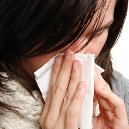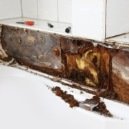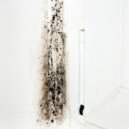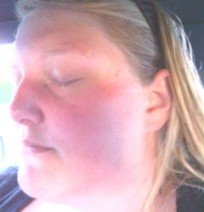Find a pre-screened local mold removal specialist Free Estimate
Find a Mold Specialist Now
Click or Call, Toll-Free 24/7
Skin Rash From Mold
You might know that mold in the home can cause respiratory problems, but did you know it can also cause a skin rash? A rash from mold can be extremely itchy and uncomfortable, and if you scratch too much, you risk breaking the skin and causing an infection. This can lead to an illness requiring medical care, including antibiotics, and may also cause scarring.
How Mold Causes a Rash
Some people are allergic to mold, and like any allergy, an allergy to mold often causes symptoms that include a rash or even hives. Allergic reactions occur when your immune system overreacts to a harmless (or minimally harmful) substance, producing large quantities of antibodies and other chemicals to try to destroy the substance in question and protect your body from the perceived threat. The allergic reaction causes inflammation, swelling, and irritation of the skin. In severe cases, swelling occurs in the throat, which can be life-threatening because it can impede breathing. This is a rare occurrence due to mold allergy, but rashes and hives are not at all uncommon.
Treating a Skin Rash Caused by Mold
Antihistamines are often used to halt or decrease allergic responses. You can buy antihistamine drugs like Benadryl or Allegra over the counter or you can get a prescription for antihistamines from your doctor. You can also get antihistamine creams to apply directly to your rash to relieve itching. Taking cool baths with baking soda or colloidal oatmeal added to the water (add about one cup to your bath) is a simple home remedy that will help relieve itching and discomfort, as well.
As long as you continue to be exposed to mold, though, you’ll probably continue to have symptoms, even with treatment. To get rid of a mold-related rash for good, you’ll need to have all mold removed from your home.
Complications from a Skin Rash Caused by Mold
As mentioned earlier, a rash from mold can be very itchy and it’s hard not to scratch. Excessive scratching often breaks the skin and then infection can set in. Signs of infection include redness, swelling, and warmth to the touch in the affected area, increasing levels of pain, discharge from wound (often foul-smelling discharge), and a fever. Usually some oral antibiotics will clear up an infection of this sort but in some cases, the infection is too severe or doesn’t respond to the oral antibiotics, and then more intensive treatment, such as hospitalization and intravenous antibiotics, is required. See your doctor as soon as possible if you develop signs of infection after scratching a rash.
Someone recovering from a severe infection of a rash from mold should absolutely recover in a mold-free environment. Exposure to mold during the recovery process will only cause more rash and itching, and with your immune system depressed from dealing with the infection, you’ll be less able to fight off the harmful effects of mold.
Mold Remediation
If mold has been causing rashes or other health problems for you, it’s important to get the mold removed from your home as soon as possible. We recommend hiring a professional to handle the job so you don’t suffer further exposure to mold, which would only make your symptoms worse. Mold remediation professionals have extensive training and know how to do the job safely and thoroughly. Most will come to your home at no charge to you, offer you a free consultation, and provide important information that will benefit you even if you end up choosing the handle the mold removal on your own. For a list of experienced mold remediation professionals providing free consultations in your area, follow the link.
Free Home Inspection By A Mold Removal Specialist
Search This Website
Facial rash caused by exposure to mold in the home.
Additional Reading
Recent Articles
-
See Our 5 Recommended Mold Removal Companies in Covington, KY
Apr 16, 25 12:59 PM
-
See Our 5 Recommended Mold Removal Companies in Wheaton, IL
Jun 20, 24 10:33 AM
-
See Our 5 Recommended Mold Removal Companies in Aberdeen, SD
Oct 08, 21 04:05 PM





